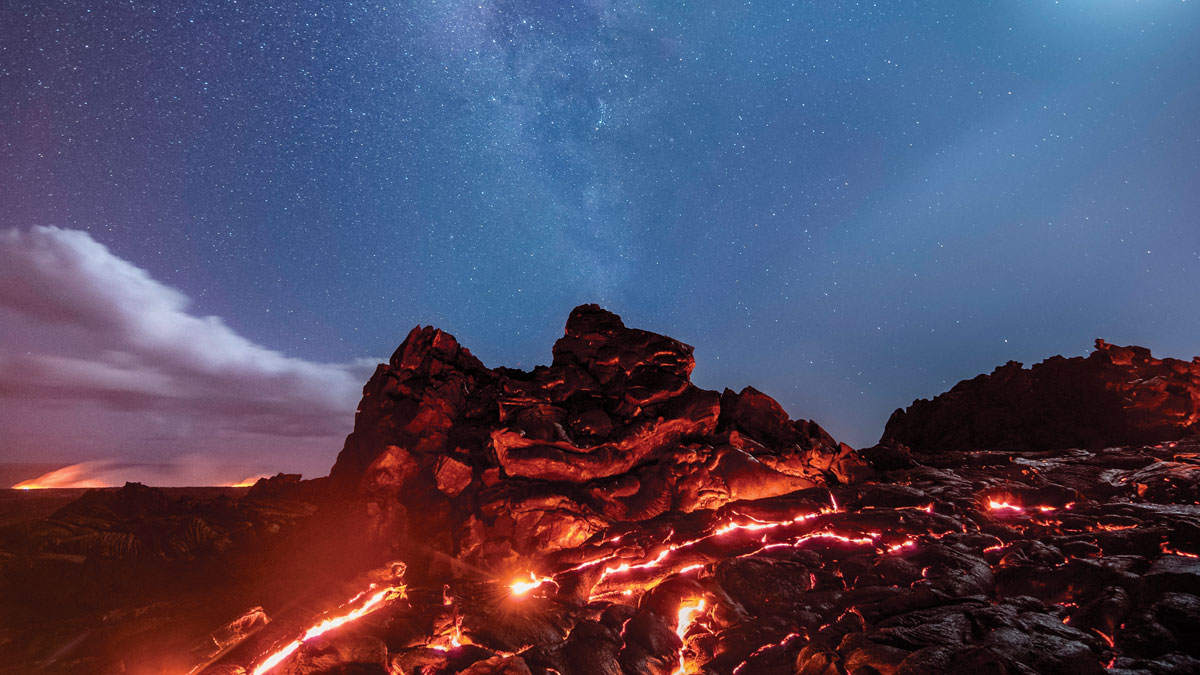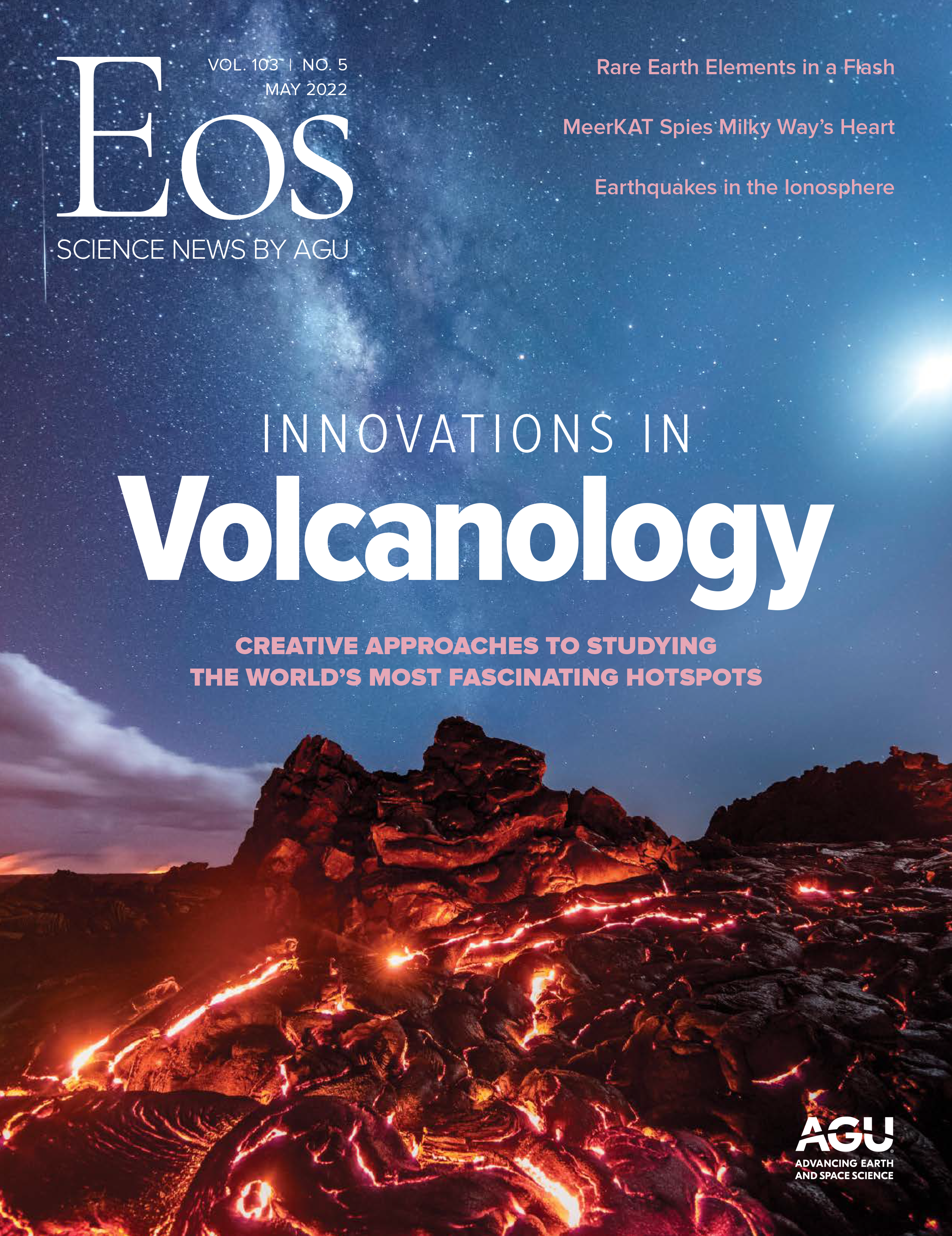When we at Eos report on scientific research, we’re interested in much more than new results. We are deeply curious—and we think you are too—about how science gets done. What are the clever and creative ways to approach a problem? When it’s impossible to collect all the data you originally sought, how can you step back and see the problem in a different light? Or, hey, if you need to get your instrument to the seafloor, what imaginative solution can you come up with to do it simply and safely?
In our May issue of Eos, we take a look specifically at innovations in volcanology. We’ll start by taking you to Iceland, where Sara Klaasen and her colleagues found a clever way to study Grímsvötn, as they describe in “Sensing Iceland’s Most Active Volcano with a ‘Buried Hair.’” The team sought to collect high-resolution data on this complex volcano system through distributed acoustic sensing—project DAS-BúmmBúmm. Read about their trek to install cables over the glacier-capped volcano, and enjoy some great photos of their badminton tournaments in knee-high snowfields.
We’ll then dive to the bottom of the sea with Pascal Pelleau and his team and a seismometer wrapped in a steel cage. Their target of study is volcanic activity near the islands of Mayotte in the Indian Ocean. Pelleau’s team wanted to find a better way to get their instruments into position than tipping them overboard and letting the sea have its way with them, and without the enormous cost of a remotely operated vehicle to escort them down. Read more about their “Cagey Approach to Speedy and Safe Seafloor Deployments.”
Painting, poetry, and oral traditions can fill the gaps left in observations.
We’ll wrap the issue up with some delightful reporting on researchers who are—well, the headline says it all: “Studying Volcanoes Through Myths, Legends, & Other Unconventional Data.” Painting, poetry, and oral traditions can fill the gaps left in observations. Learn how climate scientists, geologists, and historians have teamed up to match tree ring data with historical observations of dust veils. These cultural records provide context, suggest alternative causes, and confirm scientific conclusions. Learn the answer to a burning question we know you all had: How did the annals of Irish monks help sort out a mismatch of eruption dates and lead to new conclusions about climate events around the world?
Don’t miss the excellent opinion by Rebecca Haacker and colleagues on “Moving Beyond the Business Case for Diversity,” in which they argue that we should pursue inclusive and equitable work spaces in service of our own humanity, not simply of the bottom line. Hear! Hear!
—Heather Goss (@heathermg), Editor in Chief


